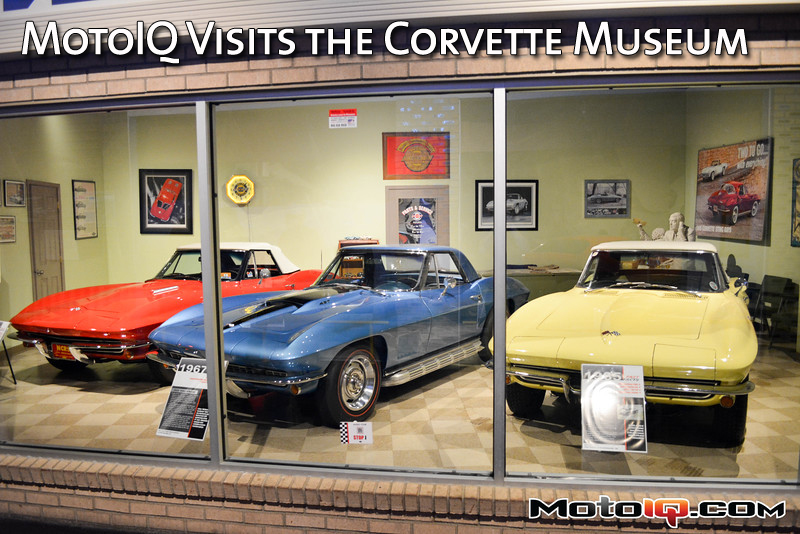,
 Most people don’t know there was a Z06 in 1963. But this car is proof such a package existed. The Z06 package added a larger front anti-roll bar, power brakes, dual master cylinders, finned and ducted drum (yes drum!) brakes, and stiffer springs. On coupes a 35 gallon fuel cell could also be added. Officially any Corvette buyer could add this package to their car, but considering this was an $1800 package (the 1963 Corvette sold for $4250), most buyers didn’t check that option box. 200 C2 Z06s were built. This specific car raced in both the US and Europe, competing at both the famed Zolder and Nurburgring circuits.
Most people don’t know there was a Z06 in 1963. But this car is proof such a package existed. The Z06 package added a larger front anti-roll bar, power brakes, dual master cylinders, finned and ducted drum (yes drum!) brakes, and stiffer springs. On coupes a 35 gallon fuel cell could also be added. Officially any Corvette buyer could add this package to their car, but considering this was an $1800 package (the 1963 Corvette sold for $4250), most buyers didn’t check that option box. 200 C2 Z06s were built. This specific car raced in both the US and Europe, competing at both the famed Zolder and Nurburgring circuits. Speaking of the Nurburgring, this was the ZR1 that reset the production car record at the track in 2009. The most amazing thing about that record? The driver wasn’t some hired gun, but just a simple GM engineer. His time was just under 7:20 and beat the mighty GT-R, the Zonda F, the Enzo, and the MC12.
Speaking of the Nurburgring, this was the ZR1 that reset the production car record at the track in 2009. The most amazing thing about that record? The driver wasn’t some hired gun, but just a simple GM engineer. His time was just under 7:20 and beat the mighty GT-R, the Zonda F, the Enzo, and the MC12.  Tramp stamp for sports car.
Tramp stamp for sports car. The rarest cars in the museum are right here: the row of Corvette concepts. Both the black and maroon cars were built in 1990 and 1991 in a flurry of design, both were used to showcase where the future of the Corvette could go. The designs were heavily influenced by aerodynamics and some of their styling cues ended up on the later C5 generation. The middle car is far more interesting; the Indy concept. That name alone should turn heads, since Indy Cars have been mid-engined since the 1970s (hint hint). There have been many mid-engine Corvette concepts, but this was the most serious. In 1986 Chevrolet partnered with engine builder Ilmor to produce Chevrolet badged engine to compete in the CART series and the Indy 500. The Indy concept was meant to piggy back on that partnership (win on Sunday, sell on Monday), despite the fact that the Indy concept had nothing to do with Chevy’s actual Indy Car program. The car itself is still quite a piece of machinery: the engine had 4-valves per cylinder, four-wheel drive, four-wheel steering, fly-by-wire throttle, active suspension, ABS and traction control and, CRT display, all wrapped up in a carbon fiber body. This was Porsche 969 stuff from a company that was known for its pooshrod drag racers. Lotus was drafted to build the chassis and figure out the handling. Two were built; one as a show mule and the second being an actual running car. Sadly, the finished car would have cost $400,000 in 1990 (or $850,000 today) so the project was abandoned. A few years later Ford would debut the Indigo concept, developed from years of F1 and Indy Car experience. Can you imagine what would have been if Ford and Chevy had duked it out in the hypercar world?
The rarest cars in the museum are right here: the row of Corvette concepts. Both the black and maroon cars were built in 1990 and 1991 in a flurry of design, both were used to showcase where the future of the Corvette could go. The designs were heavily influenced by aerodynamics and some of their styling cues ended up on the later C5 generation. The middle car is far more interesting; the Indy concept. That name alone should turn heads, since Indy Cars have been mid-engined since the 1970s (hint hint). There have been many mid-engine Corvette concepts, but this was the most serious. In 1986 Chevrolet partnered with engine builder Ilmor to produce Chevrolet badged engine to compete in the CART series and the Indy 500. The Indy concept was meant to piggy back on that partnership (win on Sunday, sell on Monday), despite the fact that the Indy concept had nothing to do with Chevy’s actual Indy Car program. The car itself is still quite a piece of machinery: the engine had 4-valves per cylinder, four-wheel drive, four-wheel steering, fly-by-wire throttle, active suspension, ABS and traction control and, CRT display, all wrapped up in a carbon fiber body. This was Porsche 969 stuff from a company that was known for its pooshrod drag racers. Lotus was drafted to build the chassis and figure out the handling. Two were built; one as a show mule and the second being an actual running car. Sadly, the finished car would have cost $400,000 in 1990 (or $850,000 today) so the project was abandoned. A few years later Ford would debut the Indigo concept, developed from years of F1 and Indy Car experience. Can you imagine what would have been if Ford and Chevy had duked it out in the hypercar world? This Astro II concept beats the Indy Concept by 18 years as the first mid-engined Corvette concept. A few concepts came before the Astro II, but none were actual Corvettes. This makes the mid-engined Corvette one of the longest running teases in history. If Chevrolet actually makes it, the automotive world’s blue balls will surely explode.
This Astro II concept beats the Indy Concept by 18 years as the first mid-engined Corvette concept. A few concepts came before the Astro II, but none were actual Corvettes. This makes the mid-engined Corvette one of the longest running teases in history. If Chevrolet actually makes it, the automotive world’s blue balls will surely explode.


